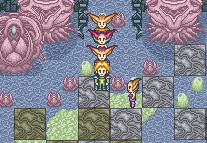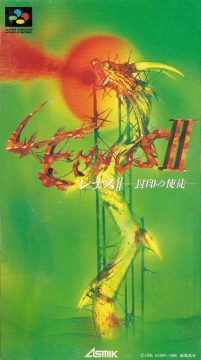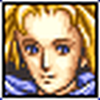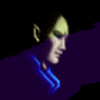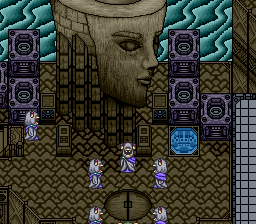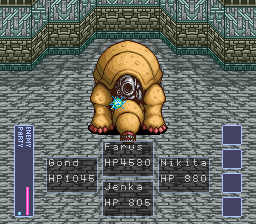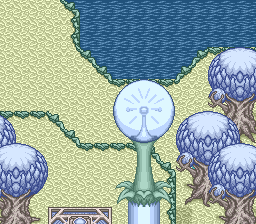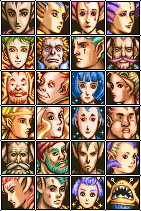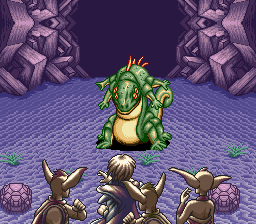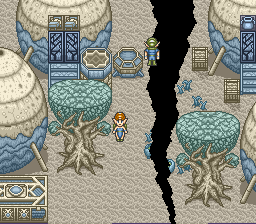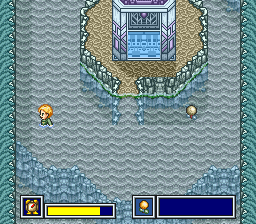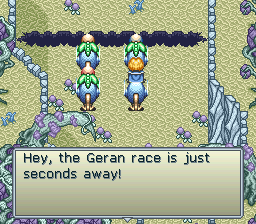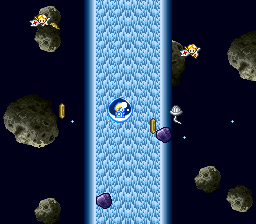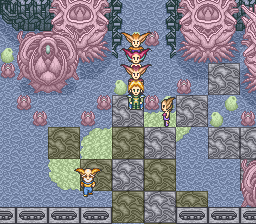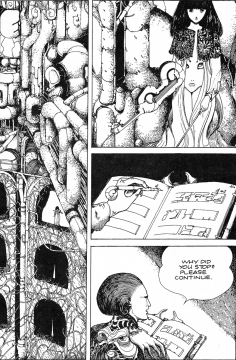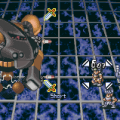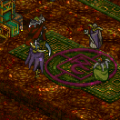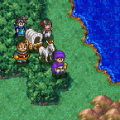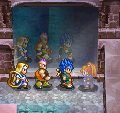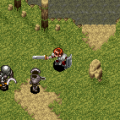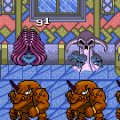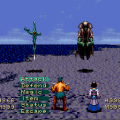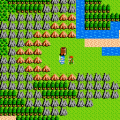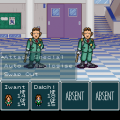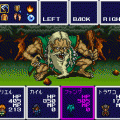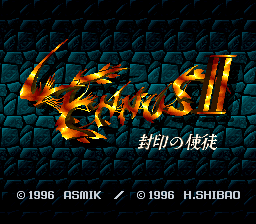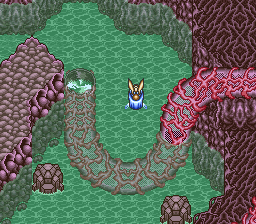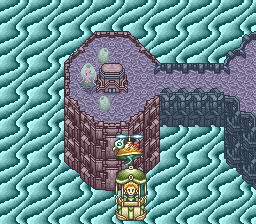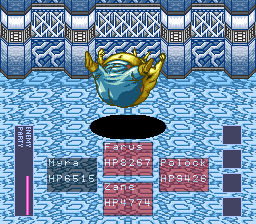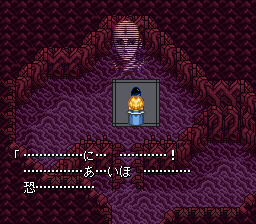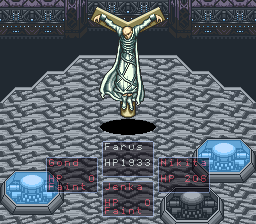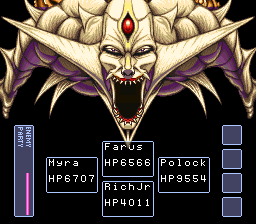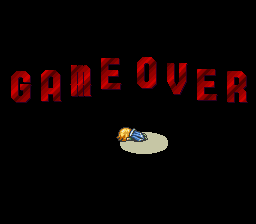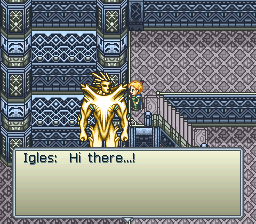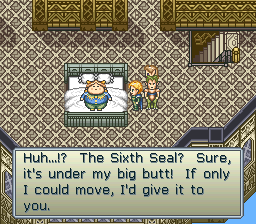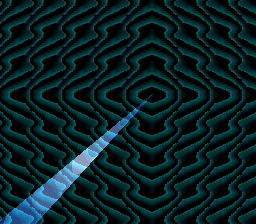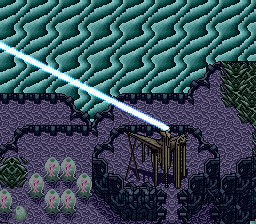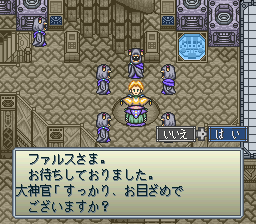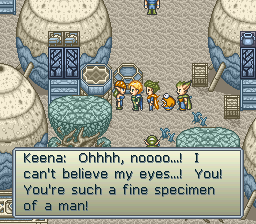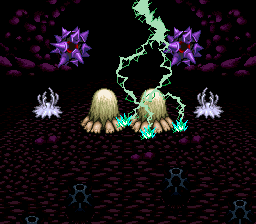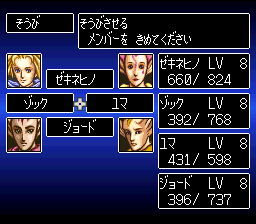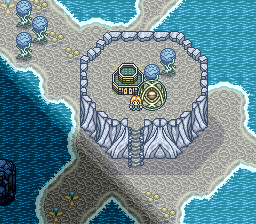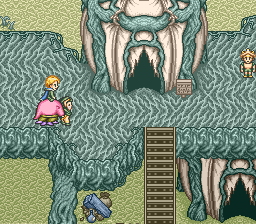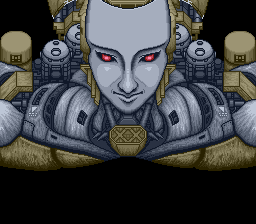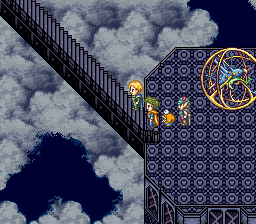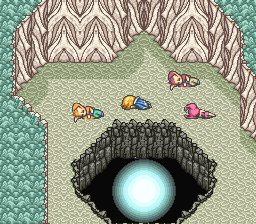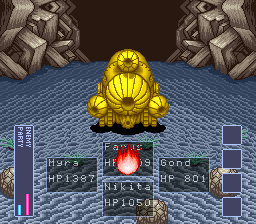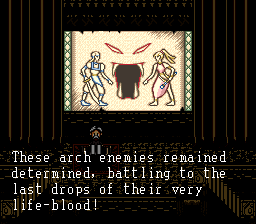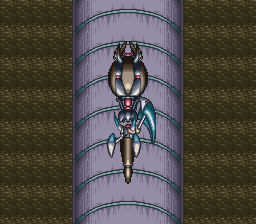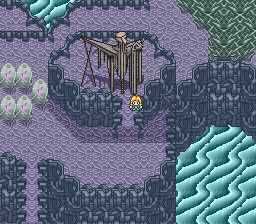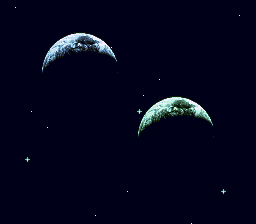Sometime between 1995 and 1996, developer Copya Systems would find itself restructured and rebranded as Shangri-La Corp., which resulted in a mass exodus of staff. The key members of the Lennus team migrated to Fill-In Café and took the game’s rights with them to produce a sequel. Lennus II: Apostles of the Seals was released in July of 1996, but by that time Enix America Inc. had long closed its doors, and Western support for the SNES was winding down as the Nintendo 64 prepared to hit the market that autumn. As a result, Lennus II would never see an English release in any official capacity. Eventually it found itself fan-translated by Dynamic Designs in 2008, with a script that largely stuck to the mood and feel of its prequel, with the exception of a little bit of racy humor here and there.
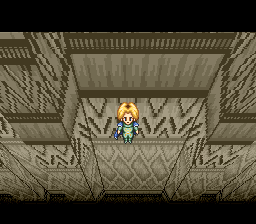
The story of Lennus II concerns Farus, a Raigan encased in crystal for thousands of years, as he awakens in the underworld of Andel. The people of Andel are struggling: What was once a single continent has broken into several small islands, each floating farther and farther away from each other into an encroaching void. The mysterious Farus is a bit of a Jesus figure to the more spiritual members of Andel’s population, and his awakening was foretold in their prophecy: his destiny is to cause the Great Union, an event that will restore Andel to its former glory. To achieve the Great Union, Farus is tasked with collecting four artifacts from each island of Andel, and can choose between three out of five acolytes to accompany him. Filled with dungeons and bosses, Andel serves as a very lengthy prologue that brings the opening chapter of Terranigma to mind.
However, all is not as it seems: As Farus gathers each artifact, he finds himself plagued by an otherworldly voice that pleads with him to stop. When Farus finally does achieve the Grand Union, a wave of destruction washes over Andel, splintering the islands further and killing the majority of the population in the process. Farus is whisked away to the surface world of Eltz, where it is revealed that he was manipulated from the start by Master Granada, an evil descendent of Gabnid hell-bent on destroying all life in the universe. Farus travels to the metropolis of Nigel, where he meets with Potentate Petro, owner of the otherworldly voice who tried to stop him before it was too late. Understandably grumpy, Petro tasks Farus with gathering eight seals in an effort to stop Granada once and for all.
Characters
Farus
A member of the revered Raigan race, Farus has been asleep for thousands of years, making him a bit of a blank slate; he does what he’s told by those around him and offers little protest. He spends much of the game as a silent protagonist, but he’s occasionally known to break out into lengthy and angsty monologues about all of the events that happen to him during his quest.
Granada
Descended from Gabnid’s “evil side”, Granada, unlike Zaygos before him, isn’t content to conquer the world; he’d rather destroy everything. His ultimate goal is to trigger the True Grand Union, merging Eltz with Lennus to create a literal death star; a supernova that will travel through the galaxy, annihilating all life in its wake. The population of Saskuot, ever the great judge of character, see him as their savior.
Petro
Potentate of Nigel, Petro tried and failed to stop Farus from fulfilling Granada’s goal of destroying Andel. He’s said to be a benevolent ruler, but there are whispers that he usurped the throne from the previous royal family by force. Furthermore, it is said that he defeated Zaygos ten years prior, but how can this be? Eventually, it’s revealed that Petro is in fact Chezni, but the game never really gets into why he’s incognito, and the coup d’etat subplot is dropped completely.
From here the game opens up, allowing the player to follow leads to pursue the first seven seals in any order they please. Most of them require some serious dungeon-diving to obtain, but strangely enough, they’re not always at the end of any given dungeon. An early seal is found halfway through a mineshaft you’ve ventured into to fetch a pair of glasses, completely unguarded and without fanfare. The few seal quests that aren’t dungeon-related get delightfully creative; one seal is under the posterior of the morbidly obese Duchess Goltork, but she’s too big to get up. A lengthy chain of deals follows, which includes the exchange of a lost wedding ring for a spanking rod, and eventually culminates in giving the fine Duchess a levitation belt so you can snatch the coveted seal from underneath her as she floats merrily.
That said, the tone feels slightly muted this time around. All of the caves you’ll traverse — and you’ll traverse many — are fairly rote caverns. You won’t be travelling through any dragon anuses this time, nor will any 8-bit priests accidentally wander in from other games. These characteristics that brought odd tonal shifts to Paladin’s Quest are largely absent from Lennus II, resulting in what feels like a much more somber and serious tale. That’s not to say the game is completely devoid of charming weirdness; early on you befriend a giant bird to take you between islands, but rather than wings, this bird flies via a helicopter propeller jutting out from its back. Later still, a turtle/hippo hybrid that serves as the boss of a sewer dungeon unhinges its head to reveal a mechanized cannon underneath. Who built this thing, and why? The game never tells, which serves to excite the imagination.
Once you reach Planet Lennus in the last third of the game, there are some fun call-backs to Paladin’s Quest. You’ll explore a destroyed Jurayn, buildings destroyed and the petals of the Sky Temple’s lily torn off. The people of Conshiuto are just as cartoonishly evil as ever, and there’s even a cameo from the previous game’s villainous party member Chill (Romanized by the fan-translators under her original name Keena) — she crushes hard on Farus but, now married, decides that she’d rather not hurt her jealous husband.
For all of the improvements the visual presentation has seen, it’s unfortunate that the same can’t be said for the gameplay. Lennus II is functionally little more than a re-skinned Paladin’s Quest. The random encounter rate is high and battles are identical to its predecessor, replete with foes that boast endless amounts of HP. You’re still able to attack with any part of your body, but there’s far fewer pieces of equipment that produce unique effects when used, so you’ve got little reason to venture outside of the usual weapon/bottle belt formula.
The key difference in Lennus II is how spirits are handled. Instead of using magic to increase your proficiency, monsters award separate spirit experience points when defeated. Fighting flame monsters will build your fire proficiency, while fighting birds will increase air, and so forth. From the outset, Farus has access to fire and light magic, but may only equip one at a time. You can swap your spirits out using a Spirit Machine found in town, or via the consumable Spirit Orb item. As you progress through the game, you’ll encounter a series of optional dungeons that award you additional spirits, and occasionally, additional slots to equip them. These dungeons are often quite far off the beaten path and one or two of them are permanently missable, so it’s important to take care to explore each overworld thoroughly.
Mercenaries are back and now allow you to swap out their equipment at will. They’re more numerous than ever, but at the expense of any plot-relevant guest members. Paladin’s Quest‘s Tiger and Fritz weren’t exactly compelling characters, but Lennus II‘s near-universal lack of party members in pursuit of defined goals makes it hard to grow attached to anybody. There’s not even a Midia analogue to keep Farus company; although you can stick with your chosen party from start to finish, one can’t help but feel that it’s a bit of a lonely experience.
Some changes have been made to status menu navigation, as well; while Paladin’s Quest employed a standard, but clunky menu system, Lennus II has re-mapped its status menu to D-Pad directions, keeping in line with the battle system. While they’ve added some handy new elements, like a dedicated auto-heal button and a save-anywhere option, menu navigation is clunkier than ever thanks to the fact that many options lead to separate sub-menu screens with limited options. Re-equipping your team and managing their order ends up taking far more button presses than it should, and what should be a simple task ends up slowing the pace of the game tremendously.
Furthermore, Lennus II also happens to be a much longer game than Paladin’s Quest. Farus will traverse four entire overworlds in Andel, Eltz, Lennus, and finally a world in which Eltz and Lennus have merged. Each map is more dense and complex than the last, but this isn’t exactly a good thing, as the game is just as grindy as its predecessor and even lighter on plot. The story appears to be telegraphing some interesting twists, but they all end up fizzling out without much payoff. Instead, Lennus II is content to devote large portions of its duration to the collection of endless series of macguffins. Once you collect the four artifacts, it’s on to the eight seals, and after you collect the eight seals, you’re whisked to another world and, insultingly, tasked with collecting the seals all over again!
The dungeons, where you’ll be spending most of your time, tend to be a complete nightmare. There’s invisible pits that drop you down floors, environmental hazards that reduce everybody’s HP to 1 if you so much as brush them, teleporter mazes, sliding ice, Sokoban puzzles and roving mini-bosses to deal with, all while you contend with the game’s high encounter rate.
On some occasions the game is startlingly poor at signposting what you need to do to advance the story: While you’re on a quest to save the town of Resolute from a gender-swapping curse, you’d better make sure you explore the dungeon thoroughly to find the key item Graffi Seed in a nondescript chest, or you’ll return to Gloucester with no way to proceed. A bartender does ask you for a Graffi Seed, but offers no advice on where it can be found. It’s these design choices that make Lennus II a much more harsh and unfriendly experience than Paladin’s Quest, and it’s surprising to see just how little the team learned from the prequel’s numerous pitfalls.
Once in a great while, the town-dungeon-town formula finds itself broken up by mini-games. They tend to be pretty vile, as they attempt to adapt speedy action gameplay to the game’s core engine, which really isn’t built for it. The majority of these are thankfully optional, but the worst, a terribly-controlled and poorly-explained jockey race, is not only mandatory but requires you to come in first place to continue the story. It’s difficult but doable, but it’ll likely take a few tries to get the hang of its awkward controls.
Post-Lennus, creator Hidenori Shibao went on to create the concept and scenario for cult PS1 RPG Legend of Legaia, and also wrote the scenario for Enix’s PS2 FMV horror game The Fear. Shibao is close friends with Akira Sakuma, creator of Hudson’s Momotaro Dentetsu strategy/board game series, and joined forces with him to work on many of the series’ PS2 entries. He’s been largely out of game development since that series ended, but keeps a sporadically-updated movie and food blog at the aptly-named Lennus.com, and is very active Twitter user (both in Japanese).
Katō and Gotō never worked on any further games as far as I can tell, and eventually dissolved their artistic partnership in 1999. Shuji Imai did graphic design work on Feda and went on to contribute to the DS port of Final Fantasy III, but it seems like he too bowed out of the industry around 2006.
Related Works
Lennus: Prelude to Destruction (レナス―崩壊の序曲) – 1993
Shortly after Lennus‘s release, Hidenori Shibao wrote a prequel novel set 10,000 years before the game’s events. The protagonist is a young boy named Theo, a resident of Karon about to take part in his coming-of-age ceremony when disaster strikes. Kormu, Sophie and Gabnid makes appearances, and the book is actually pretty long at nearly 300 pages. Prelude to Destruction is easy to get hold of and usually sells for about $10, but keep in mind that it’s a Japanese-only publication if you decide to track it down.
Angel Fusion – 1989
Before coming together with Shibao and Imai, Katō and Gotō collaborated on Angel Fusion, a short comic that would appear in the very first issue of Dark Horse’s anthology series Cheval Noir. Although not directly related to Lennus, the dreamlike style and mood makes them feel like sister works. It’s long out of print and quite hard to come by, but Tumblr user the-red-corpse has scanned the story in its entirety.
Romhacking.net: Lennus II – The fan translation patch by Dynamic Designs.
Gamasutra: The World of Lennus II: An Improvement over Paladin’s Quest? – An interesting piece by Zack Wood which compares the graphic design of both games.
